If you’ve seen hummingbirds hovering hungrily around your hydrangea flowers, you may be wondering – do hummingbirds feed on hydrangeas?
The answer is Yes! Hummingbirds do like hydrangeas. However, not all types of hydrangea are ideal for feeding hummingbirds, and not all species of hummingbird will see hydrangeas as food.
So, which hydrangeas should you plant to attract which hummingbirds, and what are the best alternatives? Let’s find out!
Why do Hummingbirds Like Hydrangeas?
Like many other garden plants, several species of hydrangea have flowers that are rich in nectar, which just happens to be a vital food source for hummingbirds. In fact, it’s what these birds are designed to eat!
The nectar-rich flowers of hydrangeas provide a welcome snack for the busy hummingbirds, who need a lot of calories to fuel those wings beating at up to 80 beats per second!
Which Types of Hummingbirds Like Hydrangeas?
Of the 19 species of hummingbird in the USA, I discovered 5 species of hummingbird that like hydrangeas. They are as follows:
The Ruby-throated Hummingbird
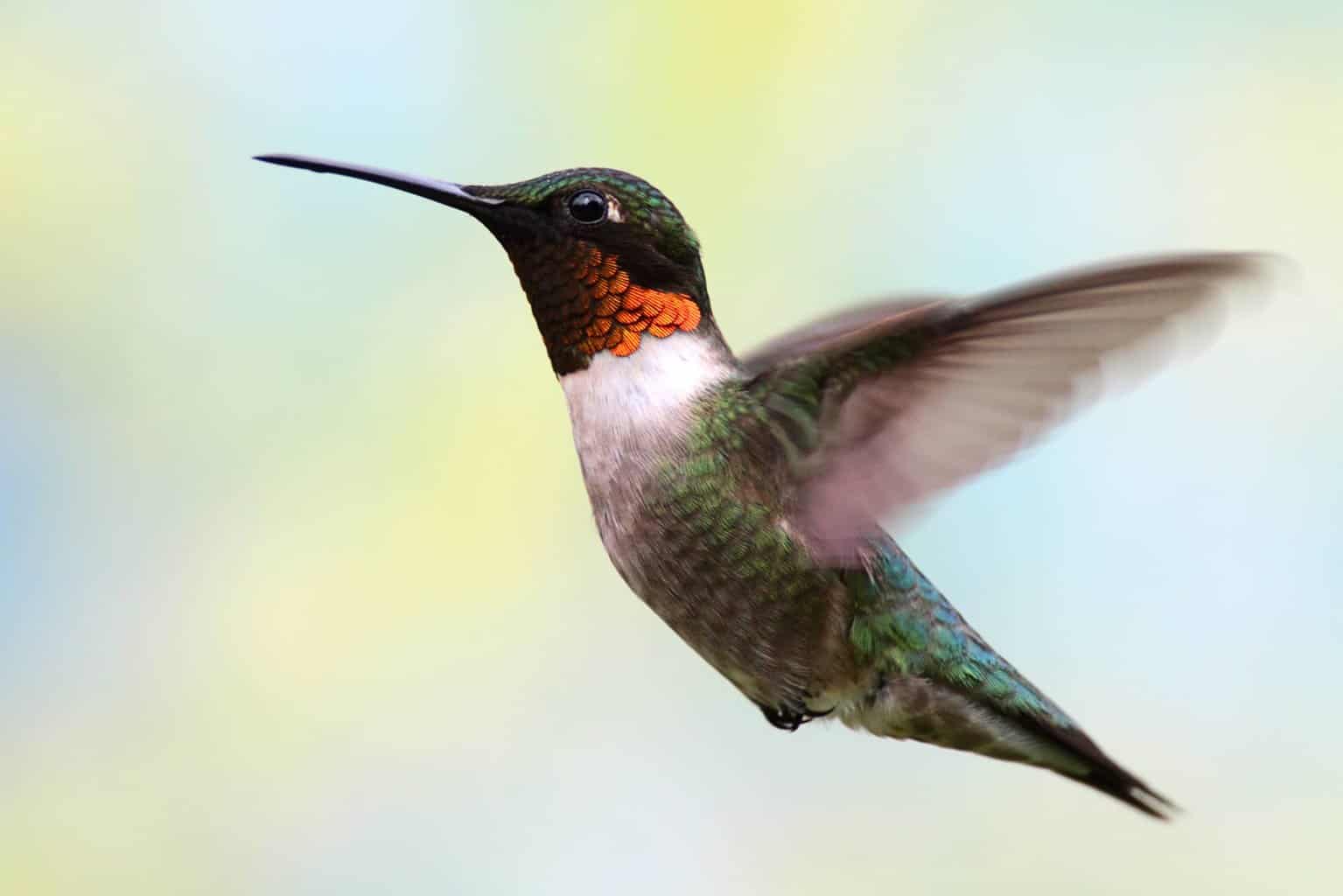
The only breeding hummingbird in the east, the famous ruby-throated hummingbird has a gorgeous emerald head, scarlet throat, and white chest. They overwinter in the Southeast and Central America.
The Black-chinned Hummingbird
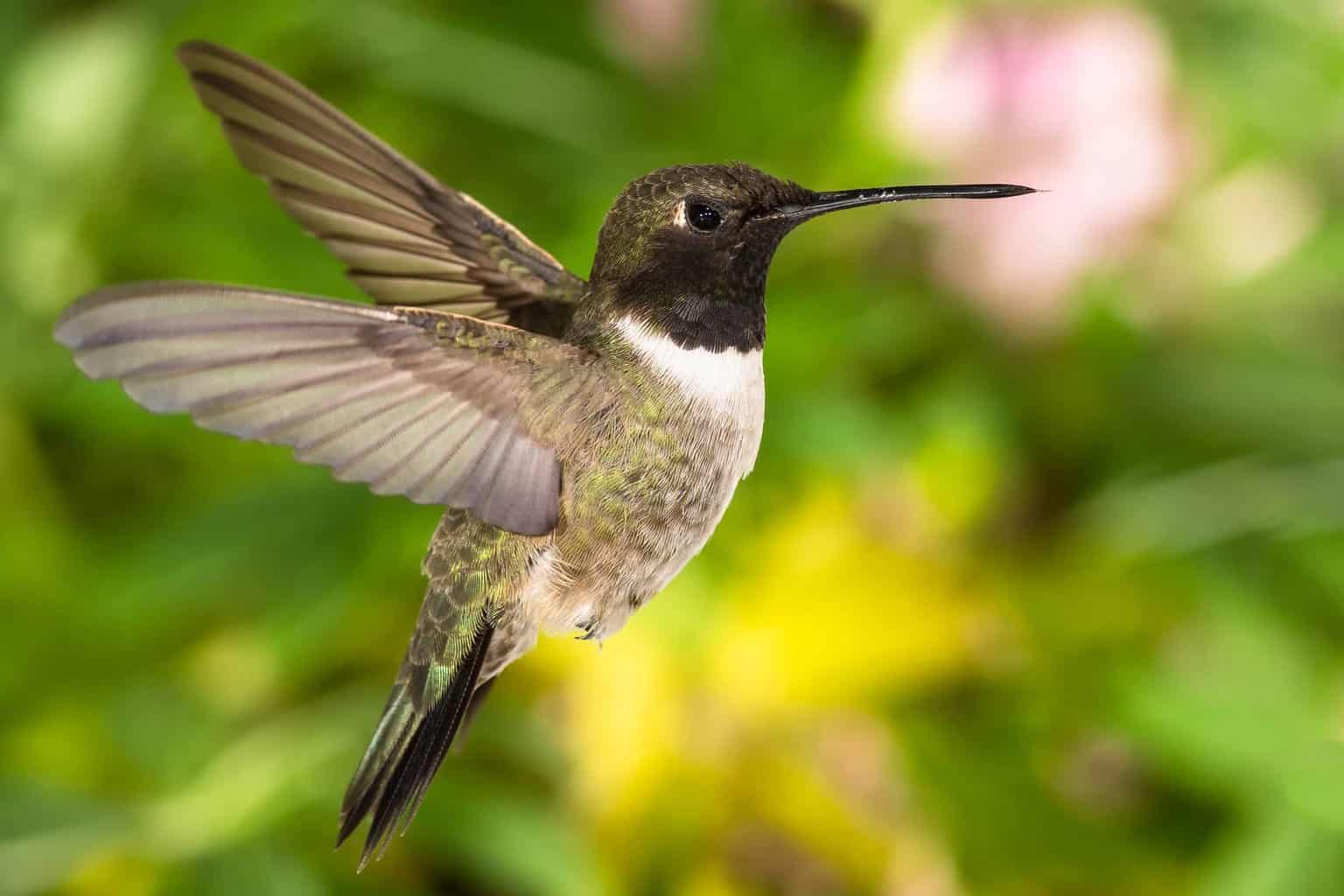
Much like the ruby-throated hummingbird but with a westerly breeding range. Seen from Texas to British Columbia during the spring and summer. Occasionally overwinters in the southeastern states.
Anna’s Hummingbird

One of the most common hummingbirds on the West Coast where it resides year-round. Frequently seen in well-watered suburban gardens. Its range now extends to British Columbia.
Costa’s Hummingbird
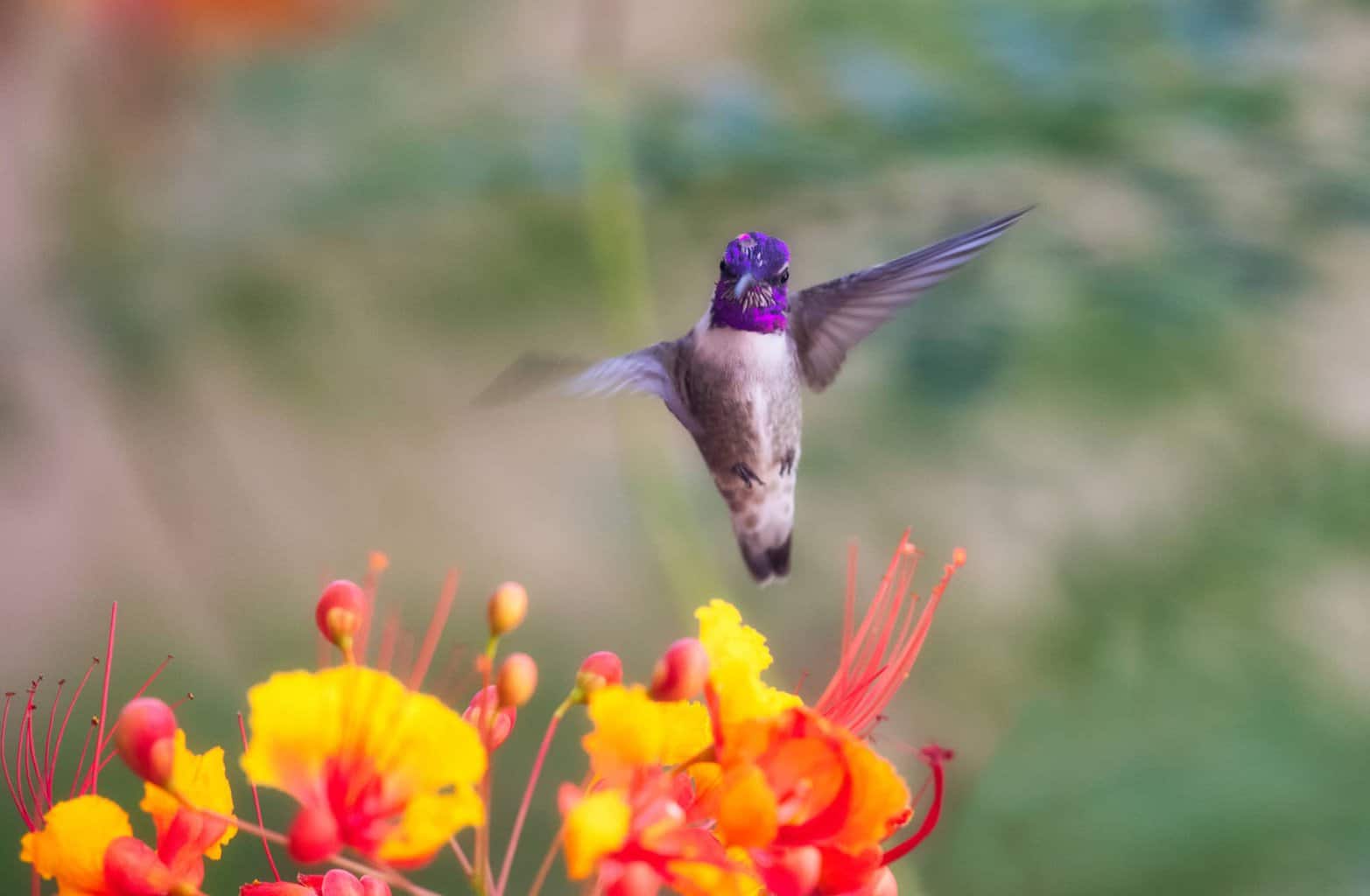
Another hummingbird of the west coast, but with a more southerly range. Prefers low desert scrub but can occasionally be found in coastal chaparral and mountain meadows.
Rufous Hummingbird
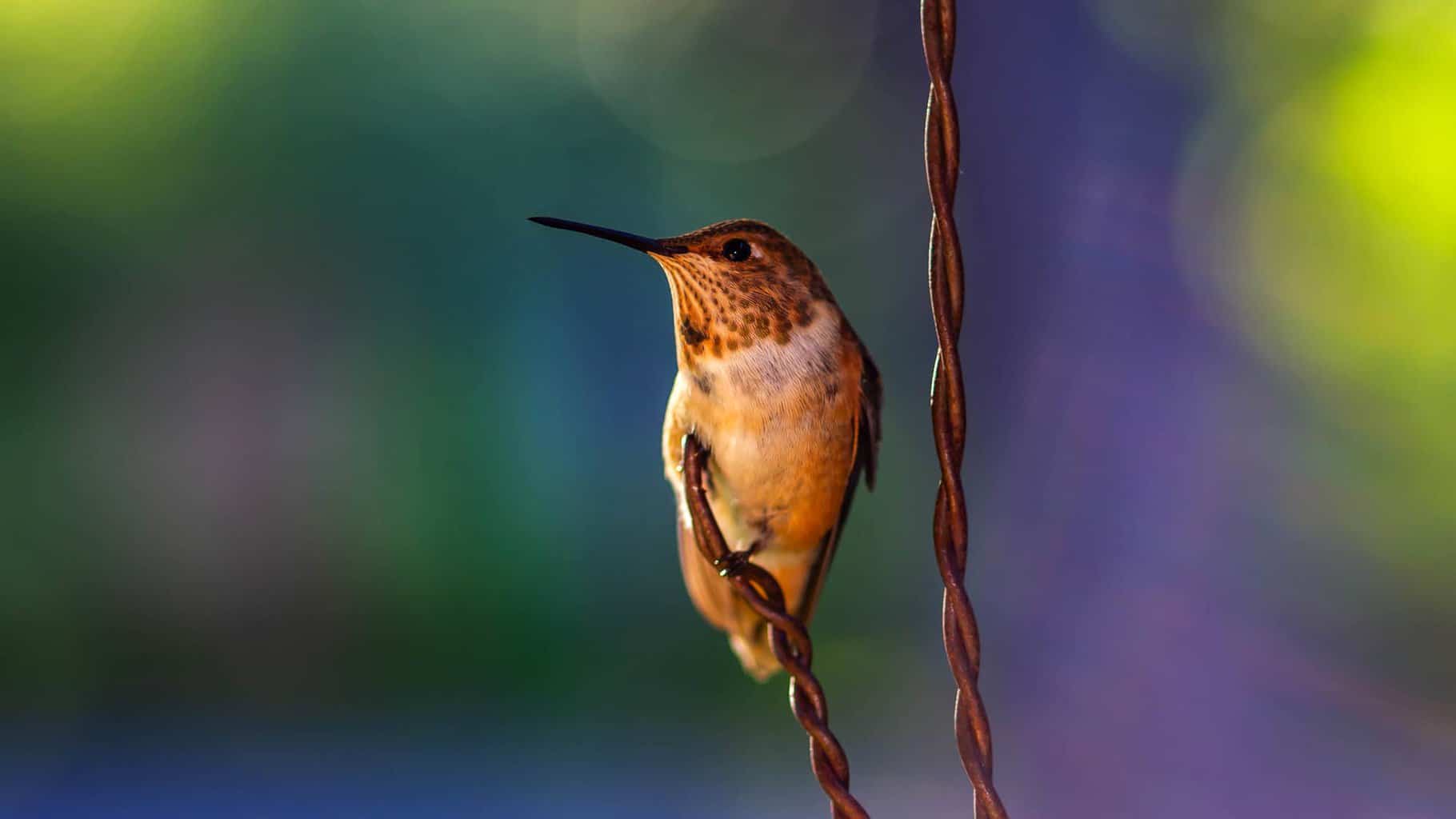
A common hummingbird with an enormous migratory range. Overwinters in the Southeastern USA and breeds in the Northwest, from Wyoming to Alaska.
Which Types of Hydrangeas Attract Hummingbirds?
Now, as I mentioned before, not all hydrangeas attract hummingbirds. Mophead hydrangea flowers (cultivars of Hydrangea macrophylla) are especially unfriendly to pollinators because many of the flowers are sterile, offering almost no nectar.
The following 4 species are known to be more useful to hummingbirds:
Smooth Hydrangea (Hydrangea arborescens)

The native smooth hydrangea is said to be one of the best hydrangeas for pollinators, and that includes hummingbirds! They produce white or pink flowers and have a long flowering period, rangin from June to September.
This is also one of the most hardy and widespread hydrangeas, fine for planting in USDA zone 3 regions.
Bright colors ,especially reds and pinks, are great for attracting hummingbirds, meaning pink flowering varieties may be the most popular for our feathered friends.
Oakleaf Hydrangea (Hydrangea quercifolia)

The deciduous oakleaf hydrangea is native to the Southeastern United States. Its large clusters of flowers turn from white to pink or purple between May and July.
A low-maintenance native shrub, and a useful source of nectar for a variety of wildlife, including hummingbirds.
Climbing Hydrangea (Hydrangea anomala subsp. petiolaris)
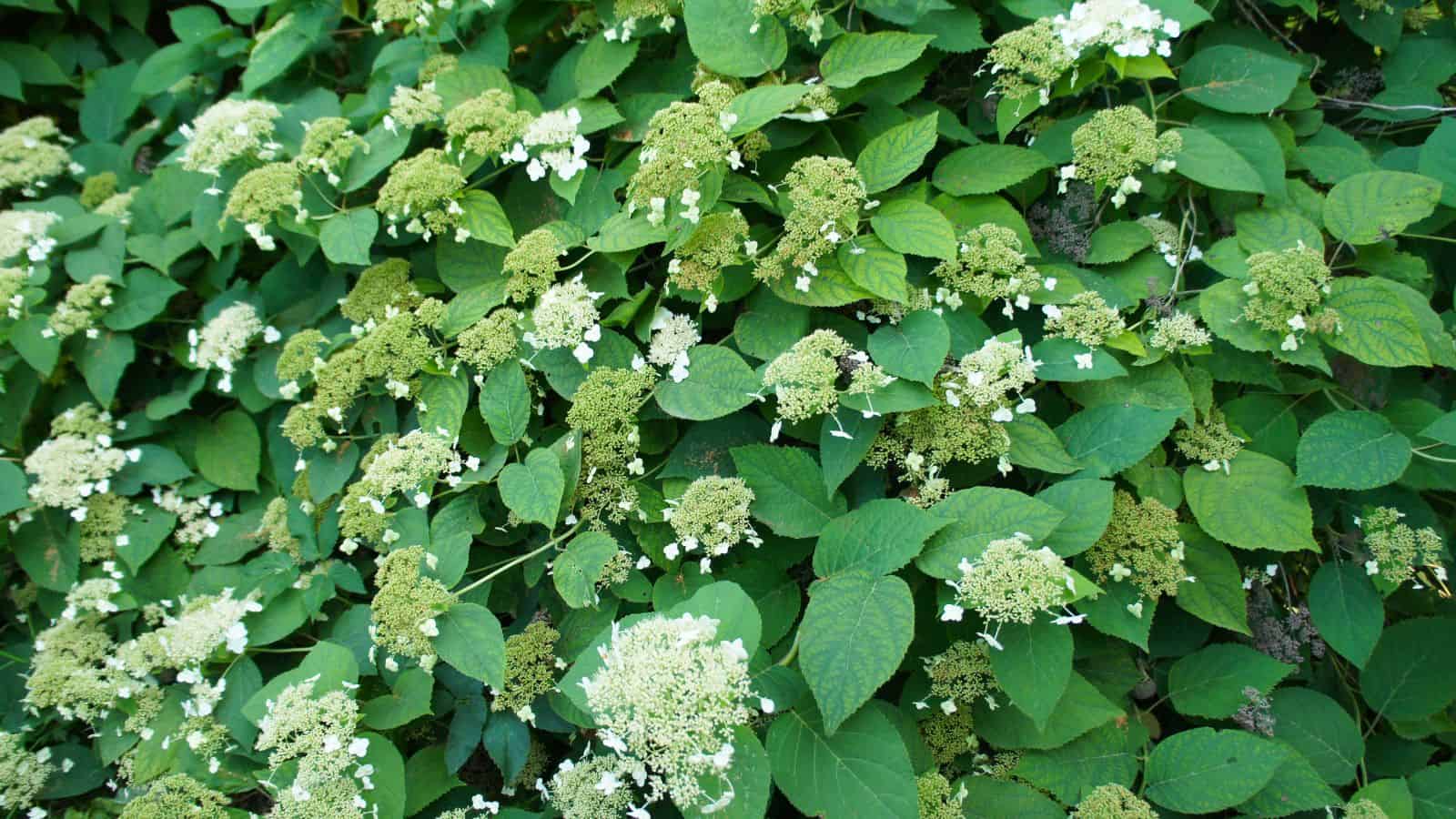
By appearance alone, the elegant climbing hydrangea is my favorite type of all. Scrabbling up walls, fences, and pagodas, this Asian hydrangea has beautiful white flowers that are more natural-looking than some of the highly bred modern varieties.
Incidentally, the young leaves of climbing hydrangea are cooked in soups in their native habitats of Japan and Korea. The sweet sap is also used as a drink!
Panicle Hydrangea (Hydrangea paniculata)
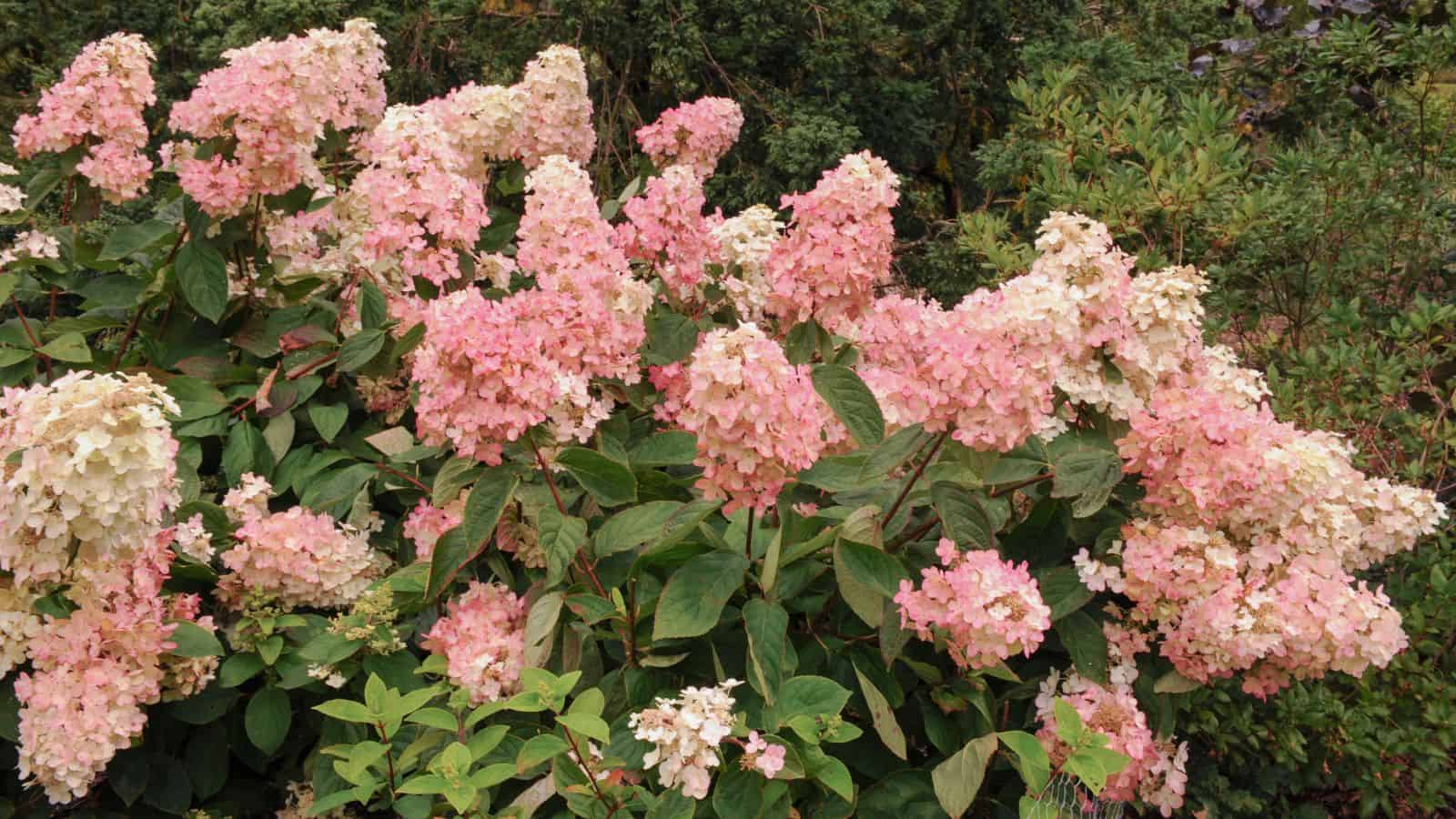
This large shrubby hydrangea can reach 15 feet high! Covered with copious white flowers from July to September, this species can be positioned in full sun or part shade.
Another hydrangea from the Far East, so not as valuable for insects as native species. The bark is used for making paper in Japan.
Why Native Hydrangeas are Better for Birds
As well as consuming huge volumes of nectar, hummingbirds love eating bugs, beetles, and various species of flying insects – that’s where native plant species come in.
Although even foreign species of hydrangea can feed pollinating insects, they won’t usually feed the insect’s young. Insects are notoriously fussy about which species of plants they lay their eggs on, and will mostly only choose native plants.
Planting native species is one of the single most effective ways you can support healthy insect populations, which are so crucial to myriad species of birds, including hummingbirds.
What are the Best Plants to Attract Hummingbirds?
While hydrangeas might provide a sugary snack for hummingbirds here and there, there are even more valuable plants that you can use to attract hummingbirds to your backyard.
Here are some of the very best flowers for hummingbirds:
- Cardinal flowers – The striking red color of the cardinal flower appears to have evolved alongside ruby-throated hummingbirds for the perfect pollination partnership. Find out more here!
- Columbine – Trumpet-shaped, colorful flowers that are rich in nectar. A short-lived plant that will often self-seed around the garden.
- Salvias (true sages) – The violet-blue flower spikes of salvia are magnet pollinators, providing nectar over a long season.
- Butterfly Bush (Buddleia) – One of the ultimate shrubs for attracting pollinators. Its fragrant flowers offer a subtle honey aroma to passers-by.
- Bee Balm – Bee balm or Monarda is beautiful a member of the mint family. Its bright red tubular flowers can be eaten, and the whole plant can be used for tea.
- Petunia – A popular choice for good reason. Few flowers bloom for as long as petunia. They’re also perfect for hanging baskets.
- Zinnia – Zinnia are brightly colored and grow fairly tall, making them a perfect match for hummingbirds! To discover even more beautiful flowers that are loved by hummingbirds, check out our dedicated guide to hummingbird plants, here.
Do Hummingbirds Pollinate Hydrangeas?
Just like bees and butterflies, hummingbirds do indeed pollinate flowering plants like hydrangeas, too! While the nectar from flowers of herbs, shrubs, and trees provides hummingbirds with a valuable source of food, flowering plants ensure that hummingbirds provide a pollination service for them, too.
While hummingbirds are feeding on the sweet nectar deep within each flower, the male part of the flower deposits small amounts of pollen on the hummingbird’s bill, face, or even wing feathers.
When the hummingbird visits another plant of the same species, the pollen grains from the previous plant enter the female part of the second plant. Thus, fertilization takes place, and a fruit with viable seeds can form!
Without pollinators, we’d have precious little fruit, so it’s vitally important we look after not only our hummingbirds, bees, butterflies, moths, and other pollinating insects that provide this life-giving service for us!
Find out more about hummingbird pollination in our in-depth article here.
Are Flowers or Feeders Better for Hummingbirds?
Of course, another way to attract hummingbirds to your garden is to offer them a hummingbird feeder. But which is better for the birds?
The answer is complex. While hummingbird feeders certainly provide a popular fueling station for these hungry birds, some people argue that hummingbirds have evolved to feed on plant nectar rather than sugar syrup.
On the other hand, many parts of North America are now deprived of the native plants that hummingbirds would have naturally thrived on. The unpredictable weather we’ve seen in recent years only adds to the uncertainty of sufficient nectar sources for these loveable birds.
Perhaps the answer is to provide both feeders and flowers for the hummingbirds, to ensure they always have enough. Whichever way you decide to go, it will never hurt to add some more wildflowers to your garden to attract hummingbirds, bees, and butterflies.
Specially formulated wildflower seed mixes make it easier than ever to grow the perfect selection of flowers for hummingbirds on your property.
- Meaningful Appreciation - Seed favors are the perfect hostess, thank-you, bridal shower, baby shower and business party favors to...
- Unique Design - Glossy paper envelopes are a great way to say thank you with a small memento of your own - wildflowers; with...
- Premium Flower Seed Mixtures – 100% Non-Gmo pure plant seed mixes without any fillers are expertly blended considering height,...
Last update on 2024-07-26 / Affiliate links / Images from Amazon Product Advertising API
Conclusion
There are several species of hydrangea from which many different types of hummingbirds feed. While hydrangeas provide a welcome source of nourishment for hummingbirds, many other types of flowers are even better.
In addition to flowers and feeders, remember that hummingbirds love to visit bird baths, too! To entice even more of these beautiful birds to your backyard, check out our guide to the very best bird baths on the market today.

